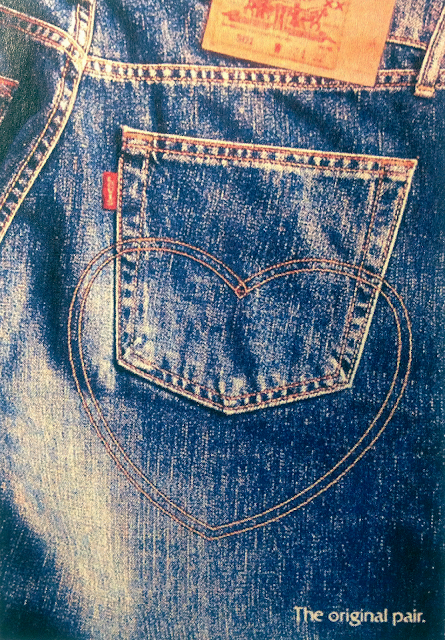‘Coffee and Cigarettes’ by Jim Jarmush
‘Coffee and cigarettes’ – an anthology
film by an American director Jim Jarmush, released in 2004. In his movies,
Jarmush widely discusses the topic of existentialism and this one is not an
exception. The movie consists of 11
shorts that are based on the dialogs of the people specifically accompanied by
a cup, or several cups, of coffee and cigarettes. There are some common threads
between the scenes, such as topics, references and ideas. The concept of the
movies was based on the original short ‘Coffee and cigarettes’ that was
released in 1986.
The film is a curious example of
experimental movie, both in visual and conceptual senses. It has a variety of
director’s tricks and visual codes that follow one major aim – to demonstrate
how any moment of communication can be precious, no matter what emotional
coloring prevails. As to the limited timing, short films are directed quite
precisely and have to incorporate multiple visual codes in order to convey more
information in shorter time.
One visual feature of the movie
that the viewer notices almost immediately is that the movie is monochrome. Such
approach was, possibly, taken in order to connect all the stories and give the
whole piece an aesthetics of documentary format. Such choice can also stand in
a parallel with the title of the movie itself, as coffee is always black and
the cigarettes are always white. Another visual element that is constantly
repeated throughout the shorts is a chess board. The element goes in parallel
with the dialogs: participants have to make the polemic action in order to move
on with the verbal game. Another
possible meaning that a chess board might carry is a symbol of choice. The
protagonists of different stories frequently discuss harmful consequences of
coffee and cigarettes, yet the choices they make are normally in favor of their
bad habits.
All the 11 scenes from each short
are constructed similarly. At the beginning, there is one wide shot, some
single shots in the middle and closing shot from over the table. Closer,
portrait shots are made in order to emphasize the micro movements a character
does, just to clarify what kind of feelings are present in the situation. The
shots play a role of symbolic visual codes and give more insight to the viewer.
The over the table shots usually
show some similar picture: coffee cups, ashtrays and chess-board pattern. Besides
of pointing out some interesting objects and their location on the table, such
shots add to the disclosure of personal characteristics of the participants.
For example, in the scene with Iggy Pop and Tom Waits, the protagonists are
having quite an argumentative dialog. Iggy stays more calm while Tom is shown
as a more aggressive and pretentious type. At the end of the scene we see the
top shot which shows that Iggy’s cup was full and Tom’s – empty. That associative thread is used not
only in order to show the opposite stance of the two, but to underline their mood
and temperament.
In the movie, the depiction of
characters does not focus on relationships between sexes and does not recall to
some stereotypical images of both men and women, at least, not for the sake of
discussion of their representation. At the same time, there are considerably
more male characters than female. This might be due to the topic and stylistics
of the movie. Empty, not quite cozy café’s, lots of smoke and existential hue
of all that could be seen as more suitable to incorporate male personages.
Nevertheless, there is a strong element of power play between the protagonists
in the scenes. The viewer can easily spot either some emotional background that
makes the characters play these games, or some misunderstandings that are
happening during the scene.

It’s remarkable that one of
essential emotional elements of any movie – anticipation – is missed in the ‘C&C’
selection of shorts. The viewer might not get the satisfaction of fulfilled
expectations here. On the contrary, the dialogs normally end up with some kind
of argument. The largest emotional value here is given to the small situations
that happen between people. Jarmush tries to put these easily overlookable
moments of interaction in the focus of attention. Such voyeuristic approach is
implemented in order to demonstrate the beauty of those small-talks, even if
they are not very peaceful and harmonious.
Another emotional component of the directors work is the usage of music. Music is also discussed in some of the shots and is one of the main topics.
There are a couple of things that
add vastly to the naturalness of the scenes. According to Jarmush, some of the
dialogs and lines were improvised by the actors. Some of them, though, were
taken from real-life situations and incorporated by the director. One more
feature that promotes more emotional connection is that all the personages
carry the names of the actors or musicians who play them. Thus, the actors are
playing themselves, even though they are not really themselves, but some
playful, sometimes exaggerated versions of them.
The genre of experimental movie implies breaking standard convention
of the more or less established film-making patterns. By means of doing this,
the directors are able to explore more innovative techniques to implement the
ideas that had been widely discussed before. ‘Coffee and Cigarettes’ is an
example of how non-standard technical and conceptual approach to character
design can create an non-cliché perspective on such frequently referred to
topic as existentialism.





















